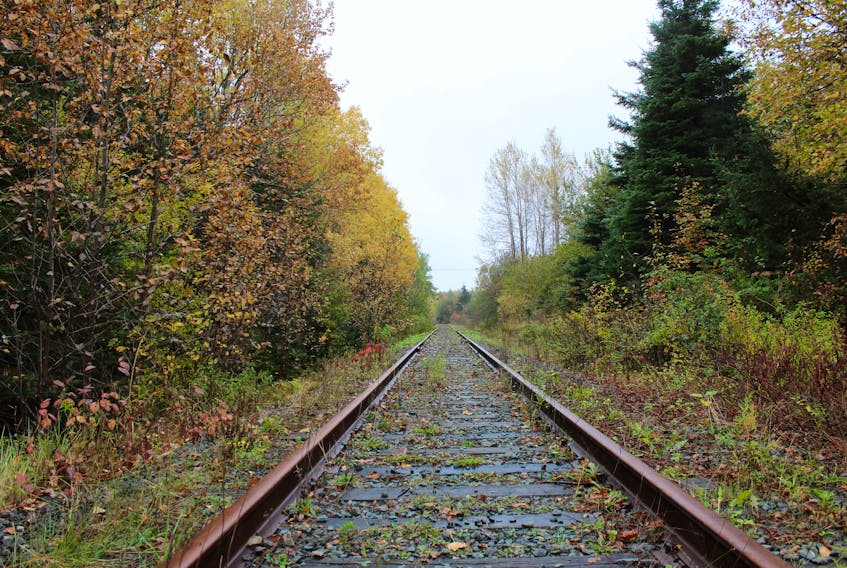One key underpinning for economic development is infrastructure, plain and simple. There has to be an affordable, environmentally-acceptable way to move goods to and from Cape Breton to the mainland.

The open letter, by Scotia Rail Development Board members Jim Guy and Mary MacPherson in the Cape Breton Post on Oct. 15, reminds everyone that resumption of rail service in Cape Breton is critical. This is not merely opinion, it is fact.
There may be those who are comfortable with the present situation where goods are transported by transport trucks, but it is pretty clear this is not a long-term, viable solution. Just look and what is happening to our roads and road safety.
Route 4 is an excellent example. This highway was completely redone a few years ago, from the foundation right up to the non-slip topcoat. Now, the surface is cut by tire-track grooves, the result of the many loaded transport trucks which now use this route.
Drivers on Route 4 have to decide to either drive in the grooves, or avoid them by going on the hills on each side of the grooves. The only problem is that if they go to the hills on the left, they are too close to the center line, and if they go toward the right of the grooves, they risk hitting the shoulder. Many opt to drive in the tire gullies.
This is not the only hazard. When it rains, the water no longer runs off the pavement as it’s supposed to. It stays in these hollowed out grooves, creating significant and continuous puddles causing cars to hydro plane or worse.
In winter, because the water no longer drains off as it should, it freezes causing black ice which is deadly for drivers because it looks like bare pavement.
Furthermore, snowploughs do their best to clear the highway of snow, but their shovels cannot reach the snow in the tire-track gullies. The result is drivers who fear driving on snow will avoid the snow-filled gullies and choose most often to hug the center line. When on-coming traffic makes a similar choice, you see cars passing each other much too closely, increasing the potential for accidents.
The above describes what has happened to the beautifully constructed Route 4. If transport trucks can destroy a new highway like this, and create the driving hazards described above, where is the logic in continuing to ship by transport? Plus, as the open letter pointed out, the cost to ship by transport is outlandishly high compared to rail.
When the front page of the Cape Breton Post recently featured a picture of Minister Geoff MacLellan posing beside a railway track, it appeared at first that there was good news — that the provincial government had somehow taken decisive action to get our trains rolling again. But no. All that posing was to warn constituents (voters) that the government was not going to continue to pay the fees necessary to prevent ripping up the train tracks.
This is a case where the governments - municipal, provincial and federal - must get their act together and “make this happen.” The federal government has monies available for “new” infrastructure. Why new, when there is so much old in need of repair?
The cost of repairing track beds - $103-million - is not that high when one considers the exorbitant cost of building and maintaining roads that continue to be destroyed by heavy transport traffic.
The provincial government needs to do more than pose for Tynski-like photos. It needs to get on board and DO something.
“This is a case where the governments - municipal, provincial and federal - must get their act together and “make this happen.” — Jane MacNeill
Guy and MacPherson are right on when they say the province should establish a policy that includes rail as a standard part of our infrastructure, similar to highways.
well, the provincial government should be pressuring the federal government to honour the 1993 agreement between the then crown-owned CN and the province that CN agreed to ensure the continuation of rail service on the Truro-Sydney line if the rail service should cease there.
was and still is an important clause in the agreement, whereby both the province and the feds have a responsibility to take ameliorative action.
All municipal government players should be fighting for the restoration, because not having train service is costing us money big-time, and it is a huge obstacle to economic development. Just based on environmental grounds alone, all governments should work to reduce the significant CO2 pollution from transport trucks.
There are just a few days left before the federal election, but still time for us to make our candidates newly aware of this important issue. The provincial election is two years away, and we have two ministers who need to be fighting tooth and nail for the restoration of rail service. Failure to do so is a travesty.
Jane MacNeill closely follows and cares about issues that can have an impact on Cape Breton's future success. She lives in Ben Eoin.









